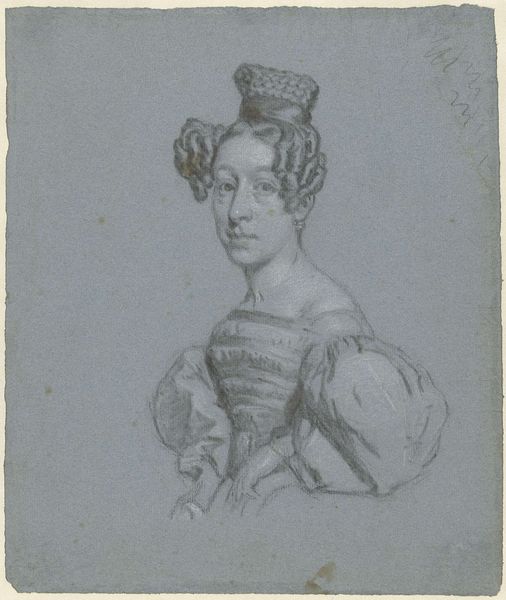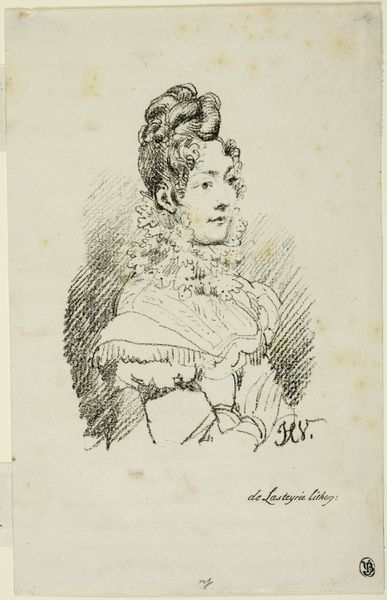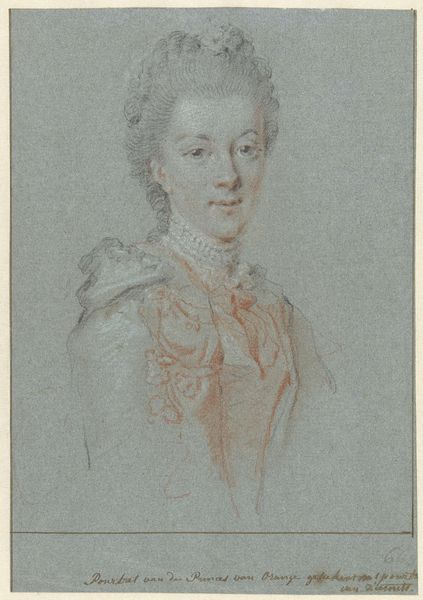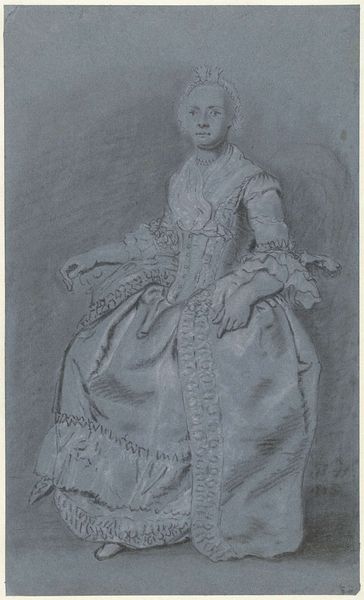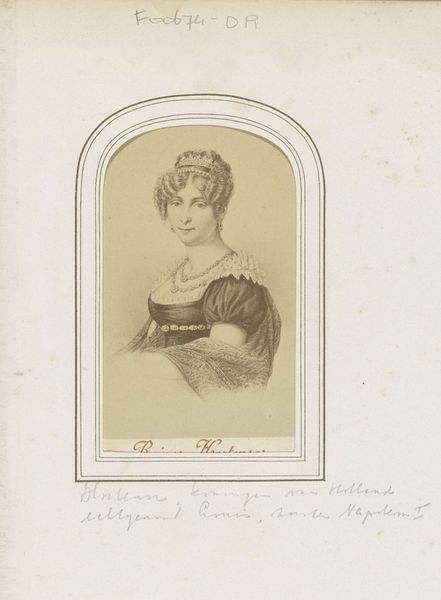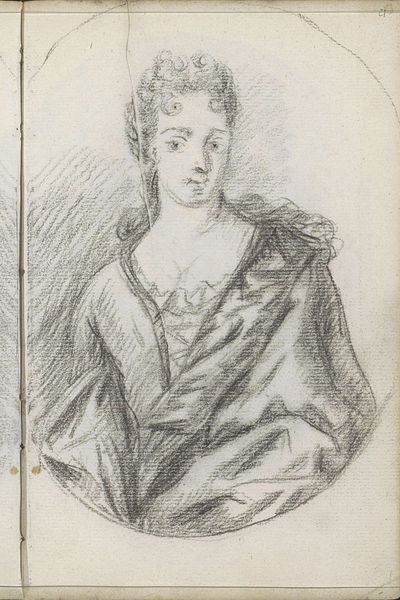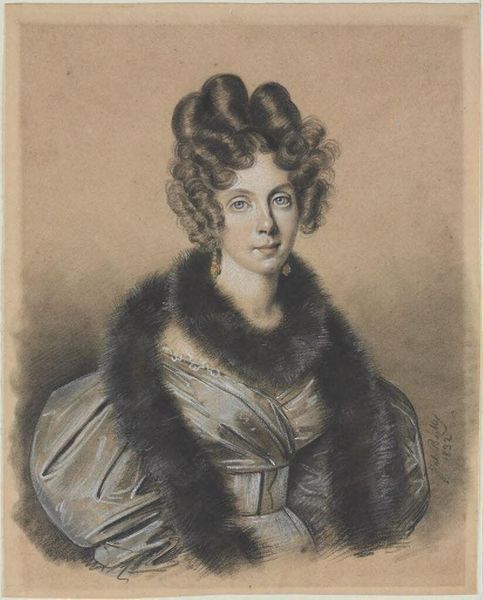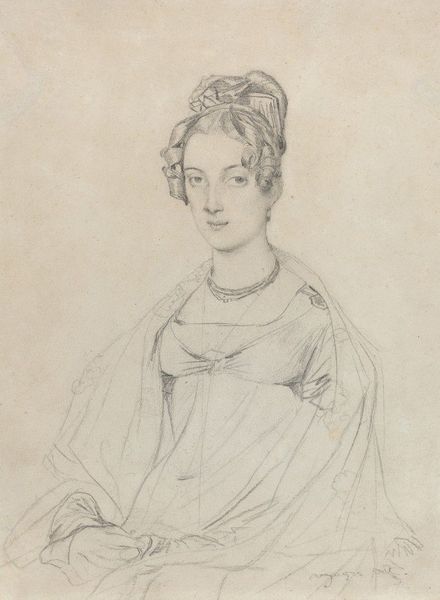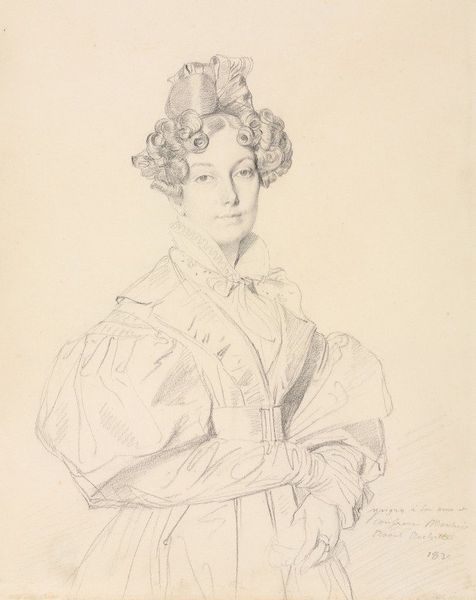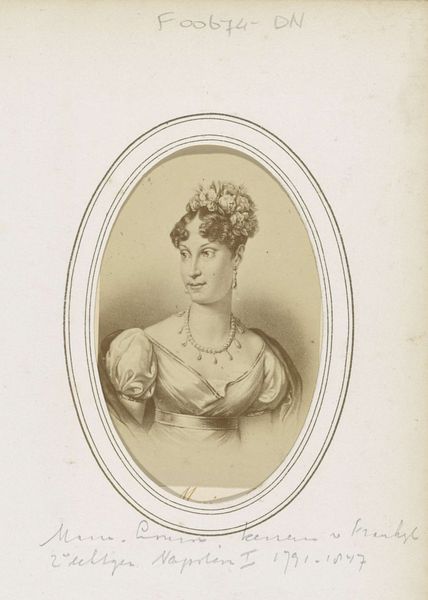
Voorstudie voor het portret van Aleida Maria Engelberts, echtgenote van prof. Hendrik Cock 1774 - 1837
0:00
0:00
charleshowardhodges
Rijksmuseum
drawing, pencil
#
pencil drawn
#
drawing
#
figuration
#
pencil drawing
#
pencil
#
history-painting
#
academic-art
#
realism
Dimensions: height 427 mm, width 333 mm
Copyright: Rijks Museum: Open Domain
Editor: Here we have Charles Howard Hodges’ "Voorstudie voor het portret van Aleida Maria Engelberts, echtgenote van prof. Hendrik Cock," a pencil drawing created sometime between 1774 and 1837. It’s a portrait that, even in its unfinished state, projects such a sense of poise. What stands out to you about this study? Curator: It’s interesting, isn't it? I’m drawn to think about what a portrait like this communicated in its time. The subject, Aleida Maria Engelberts, was the wife of a professor. Her pose and dress communicate a certain social standing and aspiration. Considering the period, how do you think women's identities were being shaped and expressed through portraiture like this? What visual cues do you notice that supports your opinion? Editor: Well, she's adorned with lace and pearls and the suggestion of fine fabric. It’s a delicate touch, not overly extravagant. The high-necked gown and careful attention to her hairstyle communicate respectability, wouldn't you say? Perhaps indicating intellectualism through modesty? Curator: Exactly! It hints at a conscious negotiation between social expectations and individual identity. Portraits of this era can be viewed as cultural documents reflecting the constraints and aspirations of women in a patriarchal society. Does it challenge that society, or simply perform the codes already accepted and understood? Editor: It feels like a careful dance, presenting an ideal of educated, bourgeois womanhood, one that aligns with and reinforces the existing social order. Curator: Precisely. It’s fascinating how a seemingly simple portrait study can reveal so much about the social and political landscape of its time. Consider how portraiture, even today, remains a battleground for the politics of representation. Editor: I never thought about it that way. This gives me a lot to think about! Thanks. Curator: Likewise. Examining historical works, can enlighten us, providing vital tools and fresh approaches to create a more egalitarian future.
Comments
No comments
Be the first to comment and join the conversation on the ultimate creative platform.

